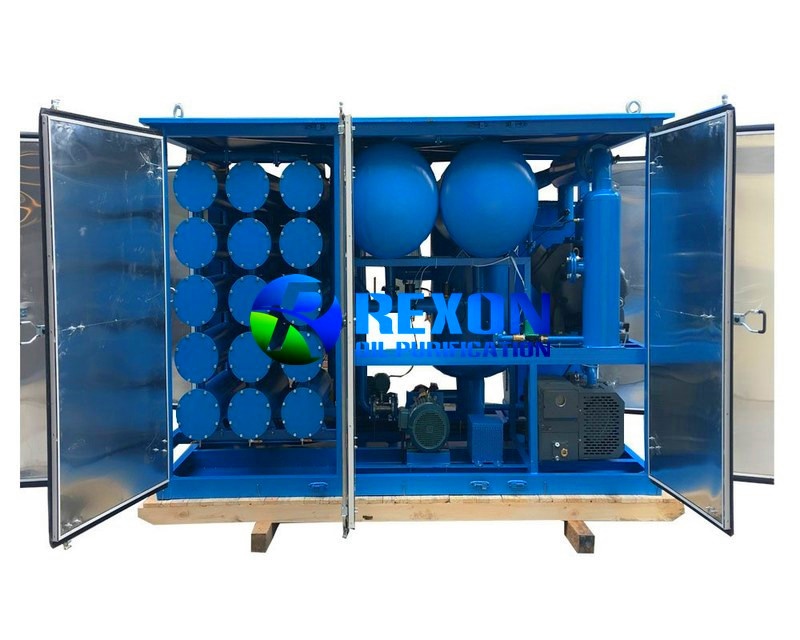How Regenerated Transformer Oil Extends Transformer Lifespan
The role of transformer oil is important in guaranteeing the integrity and long life of transformers, offering as both an insulator and coolant. Regrowed transformer oil offers an engaging option to improve these functions by effectively eliminating harmful pollutants that jeopardize efficiency. With a meticulous regeneration process, the oil's dielectric buildings and thermal stability can be brought back, bring about considerable improvements in functional efficiency. Understanding the complexities of this procedure and its broader ramifications for transformer upkeep reveals a path to not only prolong lifespan yet additionally maximize expenses in energy administration systems.
Relevance of Transformer Oil
Transformer oil plays a critical function in the reliable procedure of electrical transformers. It largely functions as a protecting medium, avoiding electric discharges and ensuring that components run safely under high voltage problems. The oil's dielectric properties are basic to keeping the integrity of the transformer, as they lessen the threat of failings that could cause pricey downtimes or catastrophic incidents.
In enhancement to its insulating capacities, transformer oil additionally operates as a coolant. As transformers operate, they produce warmth that should be dissipated to stop getting too hot and succeeding damages. The oil circulates within the transformer, transferring and absorbing heat away from vital elements, consequently preserving optimum operating temperatures.
Moreover, transformer oil acts as a barrier against moisture and pollutants, which can jeopardize the efficiency and long life of the transformer. Its chemical homes help in counteracting acids and various other byproducts that might create in time, contributing to the total health and wellness of the electrical system.
Advantages of Regenerated Oil

Additionally, regenerated transformer oil has a reduced degree of pollutants, including particles and pollutants that can break down efficiency. This pureness not just enhances the oil's thermal conductivity but additionally prolongs the functional lifespan of transformers by reducing overheating dangers. The boosted thermal stability of regenerated oil ensures consistent efficiency even under high operating temperatures, which is crucial for preserving transformer efficiency.
An additional advantage is its ecological effect. Restored oil promotes sustainability by minimizing waste and the requirement for brand-new oil production, therefore reducing the carbon footprint associated with transformer upkeep. Transformer Oil Regeneration Process. Additionally, the long life of regrowed oil translates to reduced maintenance costs gradually, as fewer oil adjustments and less frequent devices downtime are required.
Process of Oil Regrowth
The regeneration of transformer oil includes an organized procedure created to recover the oil's initial buildings and boost its performance. This procedure usually starts with the elimination of the made dig this use of oil from the transformer, which is after that subjected to various purification methods.
The initial step in the regeneration process is the filtration, where strong impurities such as dirt, sludge, and steel particles are eliminated. This is often complied with by vacuum distillation, which assists to remove dampness and unstable compounds, thereby enhancing the oil's dielectric strength.

Influence On Transformer Performance
Bring back the buildings of regenerated transformer oil substantially influences the overall efficiency of transformers. Improved dielectric toughness is just one of the most essential benefits, as it permits better insulation and decreases the possibility of electric failure. This enhancement leads to an extra secure procedure under high voltage conditions, inevitably leading to a knockout post boosted efficiency.
Additionally, the elimination of impurities and degradation products during the regrowth procedure minimizes the threat of overheating. Cleanser oil promotes better warmth dissipation, which is crucial for keeping optimum operating temperature levels. As a repercussion, the thermal performance of the transformer is boosted, permitting greater tons without jeopardizing dependability.
Moreover, the chemical stability of regrowed oil guarantees extended functional life. It stands up to oxidation and deterioration, lowering the regularity of maintenance treatments and oil replacement. This stability not just adds to enhanced performance yet additionally lines up with sustainability objectives by lessening waste.
Future of Transformer Maintenance
As improvements in innovation remain to reshape the landscape of electrical design, the future of transformer upkeep is poised for significant makeover. The combination of wise modern technologies, such as IoT sensing units and predictive analytics, allows real-time monitoring of transformer wellness, improving the capability to preemptively attend to problems prior to they intensify into major failures. This positive approach not only takes full advantage of functional efficiency yet also prolongs the life expectancy of transformers.
Furthermore, the application of synthetic knowledge (AI) in data analysis permits for even more exact fault discovery and medical diagnosis. By leveraging maker knowing algorithms, upkeep teams can determine patterns in functional data that human experts might ignore, causing even more educated decision-making.
In addition, the adoption of eco-friendly methods, consisting of making use of regenerated transformer oil, is established to redefine maintenance procedures. This sustainable approach not just reduces ecological influence but likewise boosts the overall health of the transformer.
Last but not least, the change in the direction of automation in upkeep processes is anticipated to streamline procedures, lower downtime, and reduced prices. As these developments proceed to evolve, the future of transformer maintenance will definitely end up being extra efficient, trustworthy, and sustainable, guaranteeing the integrity of important electrical facilities.
Conclusion
The application of regenerated transformer oil considerably enhances the operational longevity of transformers. Inevitably, the adoption of regenerated oil stands for an essential advancement in transformer maintenance, ensuring ideal efficiency and sustainability in the management of electric framework.
The role of transformer oil is crucial in ensuring the reliability and durability of transformers, offering as both an insulator and coolant.Transformer oil plays a crucial duty in the effective operation of electric transformers. Regrowed oil advertises sustainability by minimizing waste and the need for brand-new oil manufacturing, thus decreasing the carbon footprint associated with transformer upkeep.Recovering the properties of regenerated transformer oil dramatically influences the total performance of transformers.The Resources use of regenerated transformer oil dramatically improves the functional durability of transformers.
Comments on “Why Transformer Oil Regeneration Is Important for Performance”